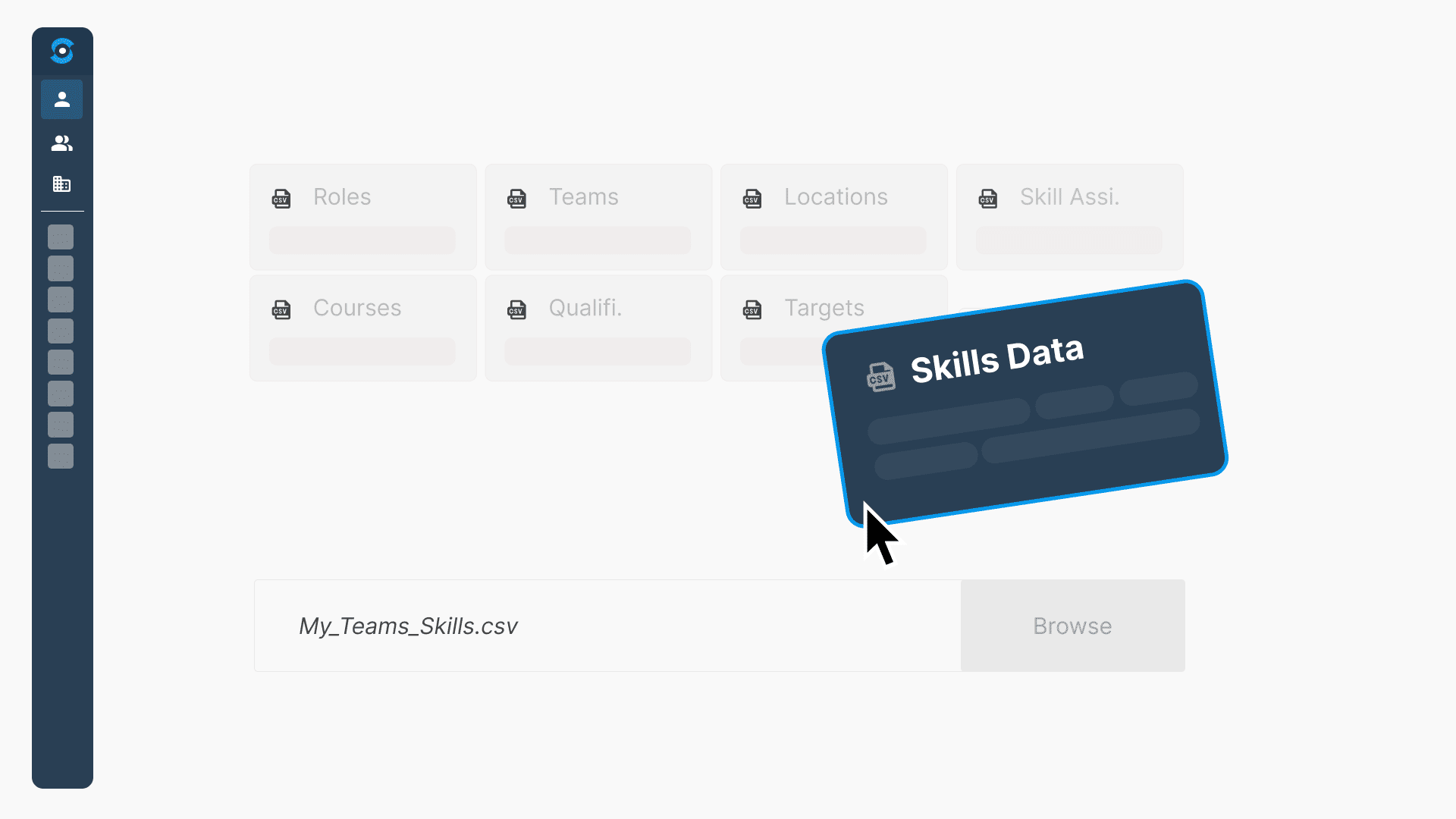Transitioning from spreadsheets to skills management software is a game-changer for many organizations looking to evolve their talent management strategies. But, as much as we’d love to say goodbye to spreadsheets for good, they do play a vital role in many people’s workflows.
That’s why we’ve built the Skills Base Data Importer. An efficient, intuitive, secure and transparent way to import and update your data via csv.
So let’s take a closer look.
Mastering Data Management in Skills Base
Before we get stuck into showing you how to import data using the new tools, it’s important to understand the data entities which make up the foundations of your skill management system.
Each entity represents a specific type of information essential for a comprehensive understanding and management of skills within your organization. From individual employee details to course mappings, these entities cover all the necessary data points that enable you to create a dynamic and responsive skills framework.
Let’s delve into each of these 13 key data entities:
- Skills: A comprehensive catalog of skills tracked within the organization, forming the basis for all skill-related activities and strategies.
- People: Comprehensive data on individual employees, allowing an individual’s skill profile to be revealed.
- Teams: Information on different teams or groups within the organization crucial for understanding team dynamics
- Roles: Detailed descriptions of various roles within the organization, including required skills and competencies essential for role clarity, personal development, resource allocation and much more
- Locations: Captures geographical or departmental locations, facilitating targeted skill management across different areas of your organization.
- Targets: Specified skill level required for each role to meet to be considered competent.
- Qualifications: Records formal qualifications, certifications, or degrees employees hold, crucial for compliance and a broader picture of capability.
- Qualification Assignments: Tracks which qualifications are assigned to which individuals, ensuring accurate record-keeping for career progression and training needs.
- Self Ratings: Employees’ self-assessments of their skills, providing valuable insights into their perceived strengths and areas for improvement.
- Supervisor Ratings: Skill ratings provided by supervisors or managers, which helps to verify and validate self-assessment responses to increase accuracy of data and foster dialog.
- Skill Assignments: Assignments of specific skills to different data entities, including people, teams, roles, and locations.
- Course Mappings: This entity connects specific courses to relevant skills or roles, creating a clear pathway for employee development and training alignment.
- Courses: Linked courses from your existing repository.
Each of these high level data entities contain deeper levels of nuance, including custom fields that can ensure process and organizational context is met.
So, now that’s all out of the way, let’s import a file.
How to import data into Skills Base
Your new home for importing or updating data via csv can be found in the administrator settings under data importer. This screen will provide a detailed history and audit trail for any previous, in progress, or failed data imports.
Step 1: Choosing your import type
When starting a new import, you’ll have the option to select from each of the different data entities. You will also have the opportunity to set the import rules such as; “I want to just update records” or “I want to create and update records”.
For the sake of this example, we’ll look at getting our Marketing team into the system.
There is no need for templates because Skills Base will provide a dynamic reference guide based on your existing fields. ( but just in case, we have created some)
Step 2: Mapping your fields
Not the right heading names? No problem.
The second step to the import process allows you to add additional context to the import, such as data matching rules and linking your csv columns to those in Skills Base.
When you have created these mappings, you’re ready to see if it all worked!
Step 3: Preview your data
Now that you’ve uploaded your data, set the rules and mapped your fields you can do a final check of your data import. At this point Skills Base has not imported any records into your account — adding another level of validation.
Step 4: Your data is ready
Congratulations you’re done in four easy steps. You’ll get one final screen providing a detailed breakdown of data that was added, updated or failed to import to your instance.
Starting your skills journey
Our goal is to democratize the processes and technology surrounding Skills Management. By helping people who are starting from nothing through the Skills Base Library, migrating away from spreadsheets through the data importer, or implementing unique and complex integrations so skill insights can be core to key talent decisions. Now is the time to explore the benefits of Skills Base — create your free account today.
